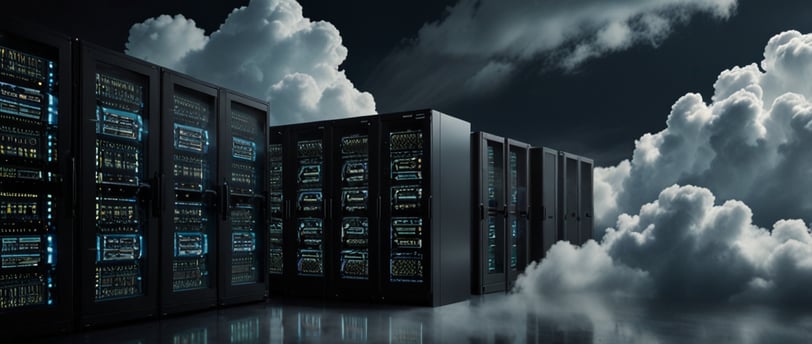Traditional Data Center vs. Cloud Data Center vs. Cloud Computing
In this blog—Traditional Data Center vs. Cloud Data Center vs. Cloud Computing—discover where the differences end, the similarities begin, and how the lines between them continue to blur.
Shashikanth Peetla


Though the title says Traditional Data Center vs. Cloud Data Center vs. Cloud Computing, don’t be surprised if I occasionally talk about them as if they’re one big, complicated family. That’s because when you look at them through a more nuanced lens, the dividing lines start to blur.
One of the very first decisions a new organization faces is this: Where will our data and processing power physically live? In the traditional setup, everything lived on-premise. The data center consisted of the full stack of IT infrastructure—servers, storage drives, and networking gear—managed and maintained by the organization itself.
Now, take that same physical infrastructure, hand it over to a third-party service provider, and let them offer access to it over the internet. Voilà! You have a Cloud Data Center. In this model, the cloud provider assumes responsibility for maintenance, updates, and fulfilling service level agreements (SLAs) for the parts of the stack under their control.
Types of Cloud Data Centers
When businesses adopt cloud data center resources, they usually select from four primary categories:
Public Cloud: Open to all via the internet, operating on a pay-as-you-go basis.
Private Cloud: Built exclusively for one organization and accessible only with that organization’s permission.
Hybrid Cloud: A combo meal of public and private clouds, tailored to meet varying needs across services.
Community Cloud: Designed to serve a specific group or community, such as a consortium of healthcare organizations or universities.
Now, let’s talk Cloud Computing. This is essentially what happens when cloud data centers are used to deliver computing services over the internet. Cloud computing provides on-demand access to computing power, storage, and applications, whereas data centers serve as the physical infrastructure that powers and supports these services.
The Three Pillars of Cloud Computing
Cloud computing typically comes in three service models:
Infrastructure as a Service (IaaS): Offers virtualized computing resources online. Think Amazon Web Services (AWS), Microsoft Azure.
Platform as a Service (PaaS): Provides a platform and tools for developers to build and deploy applications. Think Google App Engine, Azure App Services.
Software as a Service (SaaS): Delivers fully functional applications via the web, usually on a subscription basis. Think Google Workspace, Microsoft 365.
Each of these—traditional data centers, cloud data centers, and cloud computing—comes with its own set of pros and cons. The best choice depends on your organization’s specific needs, budget constraints, and long-term goals.
